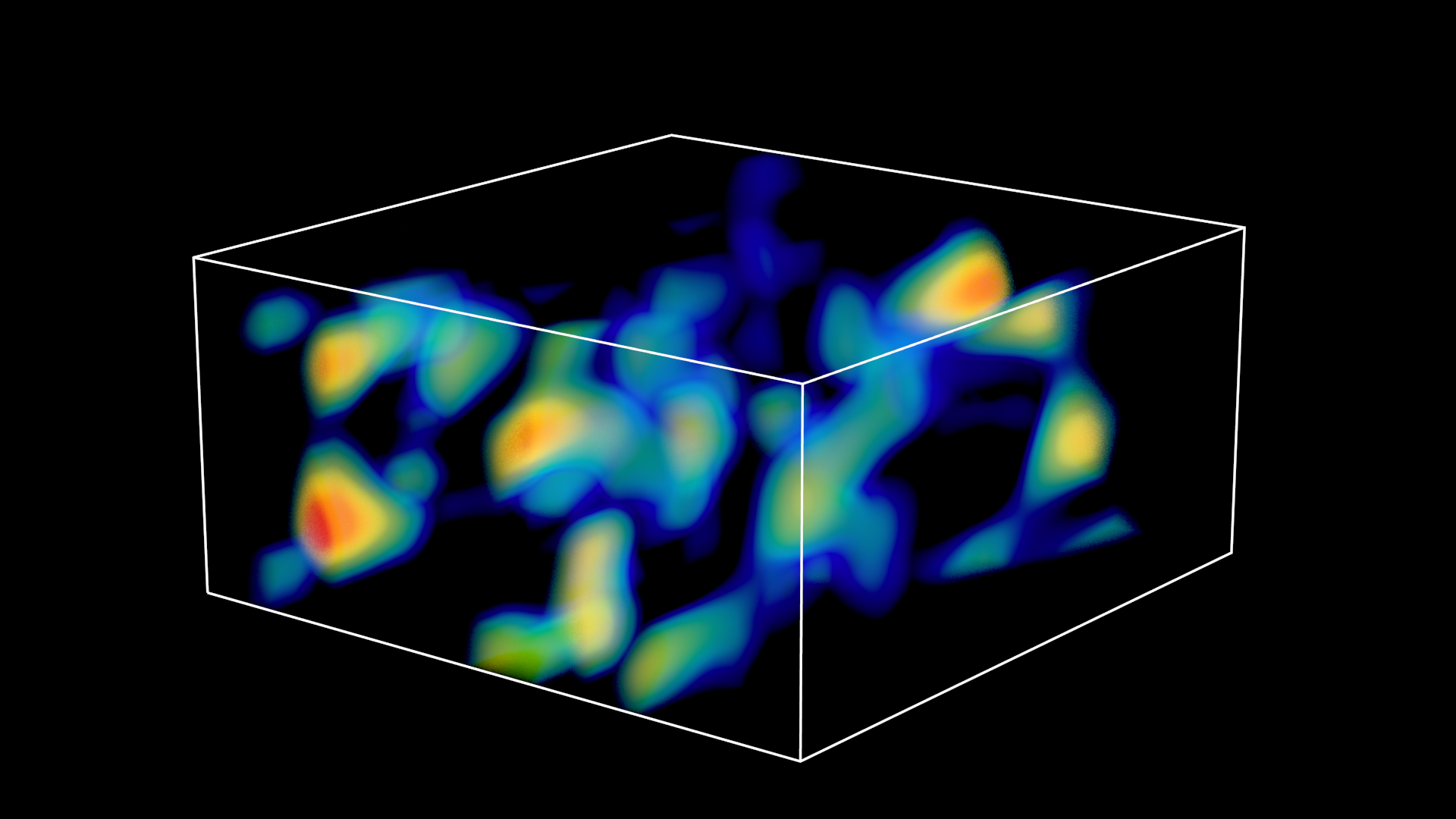
Our Universe Is Less Lumpy Than Estimated
- News
- 2K
An international group of researchers has released the most in-depth wide-field map of the three-dimensional distribution of matter in the universe ever made. The study suggests that the clumping of matter in the universe has happened more slowly than suggested in earlier estimates.
The results were obtained by studying images of 10 million distant galaxies captured by the Hyper Suprime-Cam Survey (HSC) of Japan located in Hawaii. The team includes Surhud More, an Associate Professor at the Inter-University Center for Astronomy and Astrophysics (IUCAA), Pune.
From the Earth to superclusters of galaxies, the distribution of matter is not even but it is clumped with a vast void in between. The study has revealed for the first time much sharper picture of the distribution of matter and void.

Image: Surhud More (IUCAA, Pune)
“If the universe had too much of mysterious dark matter or too little of enigmatic dark energy, it would be more clumpy than today. Conversely, if the dark energy is more and dark matter is less we would not have the lumpy structures we see today,” explained Aniket Sule, Chairperson of the Public Outreach and Education Committee of Astronomical Society of India, while speaking to India Science Wire.
Dark matter interacts gravitationally with ordinary matter forming lumps such as stars, galaxies, and superclusters while dark energy accounts for the observed accelerated expansion of the universe. There is no direct way to detect or study both dark matter and dark energy except by examining the imprint they leave in the largescale structure and evolution of the Universe.
Just at the nick of Big Bang 13.8 billion years ago, all the matter and energy of the universe was concentrated in a single point. Once the universe commenced expanding, the distribution of mass and energy should have been even, except for the teeny-weeny effect of gravity and quantum fluctuations. Hence, at any given moment and location, the distribution of matter and energy will exhibit an incredibly tiny, sub-microscopic volatility, which then becomes ‘seed’ for lumps. The relentless pull of the gravity then takes over, and even a tiny mass fluctuation snowball into runaway clumping of matter.
About 400,000 years after the Big Bang, just a blink of an eye in the cosmic timescale, a colossal flash occurred all over the universe, whose relic is still observable as the cosmic microwave background radiation, or CMB. Primordial clumps of matter and energy that was present in the new-born universe left an imprint in the CMB. Very high precision images of CMB obtained by the European Space Agency’s Planck mission revealed the pattern of the primordial lumps in the baby universe.
What about today? The earth is a lump of matter surrounded by empty space. With 99% of the mass of the solar system concentrated in the Sun, it is an example of local unevenness. Even at a larger scale, galaxies and dark matter are not spread uniformly across the Universe. Under the pull of gravity and dark matter, they are concentrated into a web-like structure of clusters and filaments, with enormous voids in between.
“Just as we expect facial anatomical features found in baby photographs to match with the adult, one would expect the lumpiness seen in the baby universe imprinted in the CMB obtained by the Planck mission must match the lumpiness we see today,” said Sule.
“Fluctuations measured by Planck are like a precise arrow shot from the early universe, and we have measured where the arrow landed with Hyper Suprime-Cam instrument of the Subaru Telescope,” says Surhud More.
“From the CMB data on primordial lumps, one can compute what should be the lumpiness today. Surprisingly, the lumpiness is less than the expected. This implies that the universe is accelerating little less than assumed, which in turn implies that the amount of dark energy in the universe is little less than theorized” said Aniket Sule. If confirmed by further studies, this can have huge implications for new physics that goes beyond the Standard Model.
Astronomers estimate that together dark matter and dark energy make up 95 percent of our Universe. Yet we know very little about it. Like a galaxy or a distant astronomical object, dark matter cannot be seen directly. We can only infer its presence from the gravitational effect it has on the fabric of space-time. According to Albert Einstein’s general theory of relativity, mass, including dark matter warps space.
As light travels from distant galaxies towards the earth, if it encounters dark matter in its way, then the light bends in the warped space. As a result, the images of galaxies telescopes capture are slightly distorted, a phenomenon called weak gravitation lensing.
By analyzing minute distortions caused by gravitational lensing, researchers have reconstructed a highly precise 3D distribution of dark matter in the universe. The data collected in this study showed how fluctuations of dark matter across the sky have changed over billions of years, and how dark energy has influenced this growth of structure.
HSC is the 820-megapixel camera attached to the 8.2 meter Subaru telescope at the summit of Maunakea, Hawaii. Since 2014, researchers from Japan, Taiwan, and the US-led by Kavli Institute for the Physics and Mathematics of the Universe (Kavli IPMU) Project Assistant Professor Chiaki Hikage and a collaboration group co-chaired by Surhud More, have been engaged in the survey.
“This is just a first step, and the completed data of HSC survey promises to advance our understanding of dark matter and dark energy,” said Kavli IPMU Principal Investigator, Masahiro Takada. HSC is still taking images, and the current results are based on only 11 percent of the full survey which is expected to be completed by 2020.
IUCAA is also involved in the Large Synoptic Survey telescope which will survey about 100 times more area within the next decade with about a 100 times more galaxies to map out the unseen dark matter and the properties of dark energy. All these are expected to shed more light on dark matter and dark energy. (India Science Wire)
By Dr. T V Venkateswaran
If you liked this article, then please subscribe to our YouTube Channel for the latest Science & Tech news. You can also find us on Twitter & Facebook.


